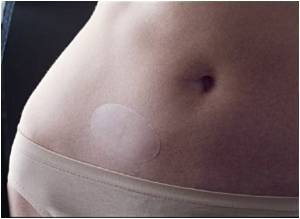‘Electronic Skin Patches 2023-2033’ is a report by research firm IDTechEx that looks at how these new technologies will enhance several aspects of healthcare.
- Electronic skin patches affixed to the skin that wirelessly and continuously monitor physiology are gaining popularity
- They are now being used for continuous ECG, remote temperature monitoring, and for conducting decentralized clinical trials
Medical Devices are Revolutionizing Healthcare
Medical devices are enabling this shift, and one key wearable technology that healthcare systems are progressively adopting is the electronic skin patch. This wearable is affixed to the skin and can wirelessly and continuously monitor physiology. Market research company IDTechEx recently published a report titled ‘Electronic Skin Patches 2023-2033’ that examines how these new technologies can improve various aspects of healthcare.New ECG Electronic Skin Patches Improve Adherence
The most prevalent kind of cardiac rhythm abnormality, atrial fibrillation (AF), significantly raises a patient’s risk of stroke. The intermittent nature of AF makes it an extremely difficult condition to identify.Electrocardiograms (ECGs) track the patient’s heart rhythm to identify AF. The 12-lead ECG is used first at the doctor’s office, and the 24-hour Holter monitor is used if more information is required. However, because these standard monitors are heavy, connected, and uncomfortable for patients, they frequently tear out the wires and cause readings to be disturbed. The major issue that clinicians have been trying to solve is patient comfort and monitoring compliance.
The main benefit that skin patches offer is this. Patients favor them because they are a less intrusive, cozy, and friendlier alternative. Skin patches considerably improve adherence to the ECG monitoring program compared to traditional devices, and patients are more able and ready to wear monitors for 48 hours or longer. As a result, extended wear Holter monitors, and mobile cardiac telemetry devices have rapidly increased throughout the 2010s. The popularity of ECG electronic skin patches has not gone ignored, and in the 2020s, this market saw consolidation with the acquisitions of Biotelemetry by Philips, Preventice Solutions by Boston Scientific, and Bardy Dx by Baxter. The industry activities surrounding heart rhythm monitoring are covered by IDTechEx in their publication, ‘Electronic Skin Patches 2023-2033’.
Electronic Skin Patches for Remote Temperature Monitoring
The COVID-19 pandemic has been the main healthcare problem in recent years. Electronic skin patches have been quickly adopted as part of a larger trend toward remote patient monitoring under pressure from the pandemic. Hospital systems were strained by the pandemic, which also led to a personnel crisis. Electronic skin patches are an excellent option for easing some of this stress. These gadgets enable caretakers to monitor multiple patients concurrently via virtual wards because they have wireless connectivity, automatic and continuous monitoring, and battery life that lasts beyond quarantine periods. Several companies with remote vital sign monitoring skin patch platforms, including Lifesignals, Vivalink, and Vitalconnect, noticed an upsurge in demand for fever monitoring applications during the epidemic.Beyond the pandemic, remote temperature monitoring is useful for identifying infections in susceptible patients early on. Patients with neutropenia (a decreased white blood cell count) following discharge from chemotherapy are a prime example, as earlier fever diagnosis using an electronic skin patch worn at home can significantly lower risks and treatment intensity. Please see the IDTechEx paper ‘Electronic Skin Patches 2023-2033’ for additional information on the use of electronic skin patches for vital sign monitoring.
Electronic Skin Patches for Decentralized Clinical Trials
The pandemic not only altered the way healthcare was provided, but it also had a significant impact on the pharmaceutical and biotechnology sectors of the economy. Clinical trial operations were greatly damaged by the times of global lockdowns, which led affected enterprises to develop a paradigm of decentralized clinical trials and create a new market for electronic skin patches. There has been an increase in decentralized clinical studies over time, not just in response to the pandemic. Instead, users should anticipate that this market opportunity will keep expanding in the future.In addition to the advantages during the epidemic, decentralized clinical trials provide two additional advantages. First, by eliminating the difficulty of travel to site visits, decentralized clinical trials have a chance to lower the drop-out rate of trials, which is frequently a primary factor in failed trials. The ability of a clinical trial to reach underserved communities and broaden the study’s scope can both be improved by eliminating the strain of routine meetings, according to the second point. Electronic skin patches have just recently been used in decentralized clinical trials; thus, their overall benefit has not yet been firmly established. Nevertheless, in the upcoming years, expect to see more collaborations between pharmaceutical firms and players in the skin patch market.
Market Growth for Electronic Skin Patches
By 2033, the market for electronic skin patches is expected to reach a value of about US$27 billion, according to IDTechEx’s study, ‘Electronic Skin Patches 2023-2033’. This market research report describes the electronic skin patch markets, technology, and players. It is the most thorough study created for this product category, covering 13 application areas, historical market data from 2010 to 2022, and market predictions for electronic skin patches from 2023 to 2033.Source-Medindia
















